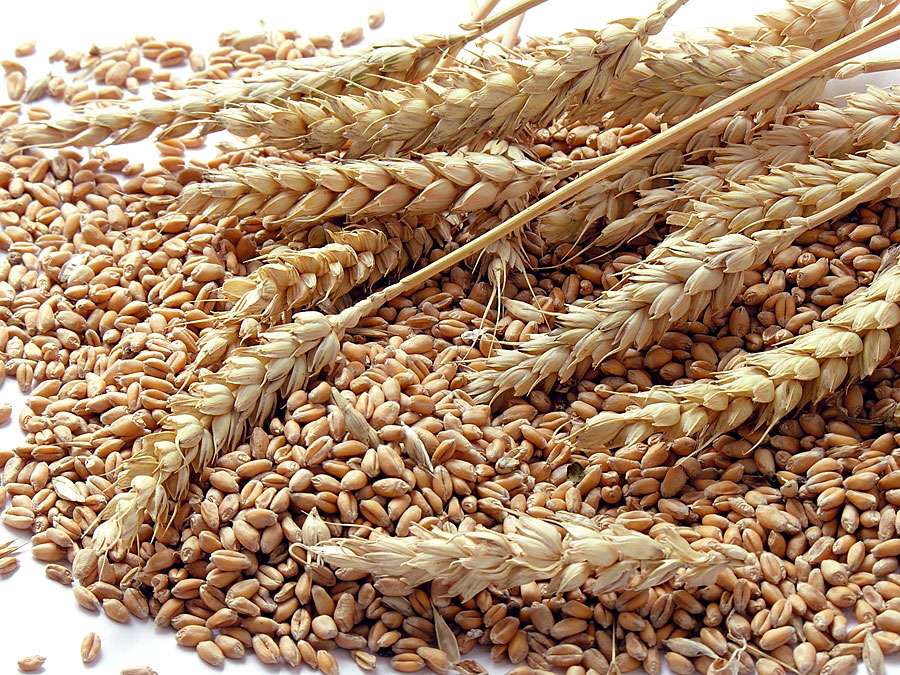Australia to import wheat for first time in 12 years as drought eats into grain production

Biosecurity concerns raised over import from Canada as Australia’s winter crop forecast to drop 20% below 20-year long-term average
Australia is set to receive its first bulk import of wheat since the millennium drought. Photograph: Tim Wimborne/Reuters
Australia is planning to import wheat for the first time in 12 years after drought across the eastern states saw grain production fall 20% last year.
The Department of Agriculture and Water Resources confirmed this week it had issued a bulk import permit to allow wheat to be brought in from Canada to be processed for the domestic market.
The import has raised biosecurity concerns among grain growers, who say the risk of bringing in a disease or new weed to Australia is “too high a price for us to be able to bear”.
“The risk associated with it is that it’s carrying diseases or weeds that Canada may have that we do not have in Australia,” said Brett Hosking, chairman of national peak body Grain Growers Ltd.
“How it is transported is crucial because it does not take much for one grain to fall out of a truck or train and potentially bring in a disease.”
Imported grain is typically processed near the port and not transported through farming regions, but Hosking said he was concerned that this grain might travel slightly further than usual.
The single shipment is due to arrive in Australia in six to eight weeks.
The department said import conditions on the shipment required the grain be sourced from “areas assessed as presenting a low plant and animal biosecurity risk and impose strict movement, storage and processing controls within Australia”.
It is the first bulk import of grain to Australia since the millennium drought.
Records provided by the department show past grain imports in 2006-2007, 2003-2004 and 1994-1995. The imports correlate with the worst drought-related cropping years in recent decades.
“The department has previously approved imports of whole grains from several countries under specific conditions, to meet industry needs following extended drought conditions,” a department spokesman said. “The department assesses all applications for import permits on a case-by-case basis using the best scientific evidence available.”
Winter crop production in Australia is forecast to drop to 29.3m tonnes in 2018-2019, 20% below the 20-year long-term average, because of severe drought conditions in Victoria, New South Wales and parts of South Australia and Queensland.
The wheat crop is also forecast to be down 20% to 17m tonnes.
The bad growing conditions predominantly affected the east coast. Western Australia had one of its best winters on record, and grain from WA makes up 56% of the national crop compared with a long-term average of 36%.
Most of the domestic wheat shortfall in eastern Australia has been filled by shipments from WA, but Hosking says WA wheat traditionally has lower protein and the Canadian shipment may be filling a specific need for high-protein wheat.
Hosking’s property at Quambatook near Swan Hill in north-west Victoria is in one of the worst-affected regions, but he said they did manage to produce some grain.
“We had a shocker last year,” he said.
The difficult season is compounded by the impact on dairy farmers, who are a key domestic market for bulk grain but were forced to reduce their stock numbers, and therefore their grain requirements, due to drought.
But Hosking said while it was tempting to criticise grain imports for taking away from Australian growers, most growers understood the reality of producing a bulk crop.
“We play in an export market and we love playing in an export market … part of that means that you have still got to play by the same rules when it goes the other way,” he said. “The ball doesn’t always bounce in our favour.”
Read also
Information about China’s rejection of Ukrainian corn is a rumor at the leve...
Ukraine exported 26 million tons of grain via the Black Sea corridor – Kubrakov
The 21st International Conference BLACK SEA GRAIN.KYIV is taking place on April 18th
In the first quarter of 2024, China reduced pork production by 0.4%
Jordan filling wheat reserves
Write to us
Our manager will contact you soon












